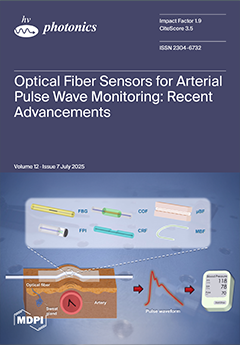This study systematically investigates the effects of trap concentration on self-heating and terahertz (THz) responses in GaN HEMTs using Sentaurus TCAD. Traps, inherently unavoidable in semiconductors, can be strategically introduced to engineer specific energy levels that establish competitive dynamics between the electron momentum
[...] Read more.
This study systematically investigates the effects of trap concentration on self-heating and terahertz (THz) responses in GaN HEMTs using Sentaurus TCAD. Traps, inherently unavoidable in semiconductors, can be strategically introduced to engineer specific energy levels that establish competitive dynamics between the electron momentum relaxation time and the carrier lifetime. A simulation-based exploration of this mechanism provides significant scientific value for enhancing device performance through self-heating mitigation and THz response optimization. An AlGaN/GaN heterojunction HEMT model was established, with trap concentrations ranging from 0 to
. The analysis reveals that traps significantly enhance channel current (achieving 3× gain at
) via new energy levels that prolong carrier lifetime. However, elevated trap concentrations (>
) exacerbate self-heating-induced current collapse, reducing the min-to-max current ratio to 0.9158. In THz response characterization, devices exhibit a distinct DC component (
) under non-resonant detection (
). At a trap concentration of
,
peaks at
when
. Compared to trap-free devices, a maximum response attenuation of 64.89% occurs at
. Furthermore,
demonstrates non-monotonic behavior with concentration, showing local maxima at
and
, attributed to plasma wave damping and temperature-gradient-induced electric field variations. This research establishes trap engineering guidelines for GaN HEMTs: a concentration of
optimally enhances conductivity while minimizing adverse impacts on both self-heating and the THz response, making it particularly suitable for high-sensitivity terahertz detectors.
Full article





